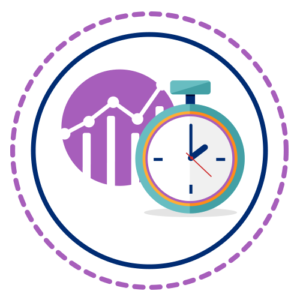Human-centered communication is achieved by merging the quantitative data a company has access to, and qualitative information that it has obtained directly from customers and employees.
This approach involves both customers and employees in the design of a communication program that makes each individual feel like the business is talking directly, and only, to them.
As with anything worth achieving, this is a journey, not a destination.
Prevent a fractured digital CX by moving your business to a more human- centered communication approach
Here are 4 areas to focus on:
1. Customer input
Key to this approach, is bringing the voice of the customer to the digital communication design process.
Asking customers directly what content they want to receive, when and how, is invaluable to the design process.
Customers are way better positioned to design the ideal customer journey than literally, anyone else.
This concept of co-creation (company + customers) results in qualitative information that becomes an important input (alongside communication preference and engagement data) in helping companies create communications that really address customer needs.
2. Employee input
You cannot expect to achieve a great customer experience without paying the same level of attention to the employee experience.
How employees feel about the company, impacts on how they interact with customers.
The human-centered communication approach, views employees as essential to really understanding customers.
It makes sense then, to implement processes that gather information from employees about their experience working for the company, as well as the insights they get from customers on a day-to-day basis. This information becomes another valuable input to co-creating the ideal communication strategy.
3. Individualized communications
Human-centered communication does not aim to solve an organization’s entire customer 360’ requirements or to achieve the nirvana of a single view of the customer.
But, just having the qualitative insights gathered (from customers and employees) and being able to marry that to quantitative data, enables the next step – using these insights to create individualized communications that contain personalized content and send them via the customer’s preferred channel.
4. Real time analytics
As with anything worth achieving, this is a journey, not a destination.
Once your communication strategy is operational, it’s imperative to have analytics that refine the shape of the customer, constantly, in real time.
All customer communication engagement data must be fed back into the process.
This information is vital to the approach, for two key reasons:
- To measure the performance of each communication against set metrics
- To continually refine, improve and update the shape of each customer.
To recap – human-centered communication requires businesses to use the information they have in the form of preference and engagement data, and to marry that with input obtained directly from customers and employees – in order to co-create a communication strategy that really adheres to customer requirements.
Putting humans back into the design process can unlock multiple organizational benefits, such as:
- A fracture free digital communication experience
- Alignment of previously siloed communication initiatives
- Enriched data and real-time insights to shape each customer



